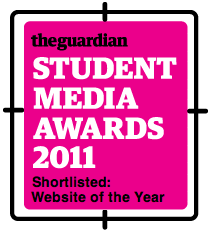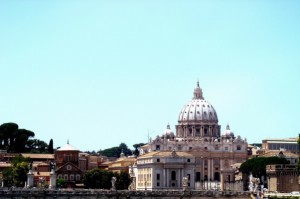The historical development of European monarchy is a complicated process, but it is the only way to understand its present and future
For many, the word ‘monarch’ is indelibly associated with the image of a crowned head of state, reigning ceremonially until death should bring an heir – preferably a boy – to the throne. Yet the origin of the word offers no indication of this paradigm. Its origins lie in the Greek words monos, one, and archon, ruler. Under this etymological definition, David Cameron appears more a monarch than Elizabeth II. So, how did we get from a fairly ubiquitous term of governance to such a specific idea of what monarchy should mean?
Whilst the development of kingship is a complex phenomenon, it is possible to extract a loose overview of the European monarchical tradition by tracing the development of three features synonymous with contemporary kingship: hereditary succession, agnatic primogeniture (the succession of the first son over brothers), and political impotency.
Hereditary Succession
In a Europe of elected politicians and appointed bureaucrats, why should the accident of blood transfer the headship of a state from one dynast to the next?
Although not omnipresent – the Vatican’s papal monarchy being an example to the contrary – hereditary succession is embedded in the popular conception of how a kingdom should work. Whilst often criticised – the historian Edward Gibbon claimed it presented the “fairest scope for ridicule” – we must not forget that heredity is there for a reason: security.
An incomplete transition of power precipitates volatility. This can be seen in North Korea, which BBC Seoul correspondent Lucy Williams called a “communist monarchy”. The death of Kim Jong-Il on December 17th 2011 caused neighbouring South Korea’s stock market to fall 3.43% due to concerns over the instability of the succession. The insecure assumption of a loosely-designated heir, Kim Jong-Un, threatened a power vacuum with catastrophic results for the geo-politics of the region. True hereditary succession seeks to avoid such uncertainty; by providing legitimacy to an unquestionable successor, the chances of a coup d’état are vitiated. Crowning an heir in his own lifetime brings a ruler further stability.
Meanwhile, anarchy can prevail in elective monarchy; the Holy Roman Emperor lacked legitimacy, and faced succession disputes and civil war. However, a hereditary succession need not be inflexible. The 1936 Abdication Crisis, which pressured Edward VIII to abandon the throne due to an unsuitable marriage, was the latest episode in a long saga of consensual British monarchy. Heredity might bring stability, but all dynasties have to be adaptable to survive in the long term.
A United Queendom?
With Beatrix of the Netherlands, Elizabeth II of Britain, and Margrethe of Denmark so present in the media, one can forget that a female monarch is often an anomaly. Even as nations equalise succession between genders, they cannot cloak the institution’s patriarchy.
So, why is it the United Kingdom, and not the United Queendom? The preponderance of agnatic primogeniture can be explained by simple misogyny which pervaded continental Europe, such as the Salic Law, the Salian Franks’ code which barred women from inheritance. Whilst the English exploited female claims, as Edward III did when he demanded the French throne through his mother’s line, a ruling queen was another matter. It is no coincidence that the accession of Matilda led to ‘the Anarchy’.
Ruling queens present tangible difficulties. Historically, one of the prime functions of the king is martial, where women have been at a disadvantage. The ramification of marriage and heirs provide queens with a unique difficulty; to wed a subject is unseemly, but to marry a foreign prince is to give that country worrying influence, as with Mary Tudor’s Spanish husband.
Sovereign but Not Sovereign
Today, most European monarchs are de jure heads of state, but no longer de facto administrators of the kingdom – they reign, not rule. In the UK, the Queen’s Speech expresses the policy of ‘her’ government, but the days when crown governed are long gone. The Grand Duke of Luxembourg even forgoes the formality of assenting laws, simply announcing them.
Through its history, monarchical power has oscillated. Every country has reacted differently: revolutions have deposed kings; parliaments and constitutions have neutered them; and some have, like Lichtenstein, recently boosted royal power.
One trend is the influence a monarch gains through the church. Princes have claimed divinity for millennia, blurring the division between king and god; mystical powers attributed to sovereigns, such as the Holy Touch curing scrofula, took centuries to fade. Even if a monarch couldn’t be God, they could always utilise the image of God. The English Reformation and creation of the Church of England made Henry VIII caesaropapist, granting him absolute spiritual and political authority. Henry VIII “became in effect Pope” in his realm according to Dr Diarmaid MacCulloch, Professor of the History of the Church at Oxford. As Europe became increasingly secular during the 18th and 19th centuries, the power of the monarchy diminished.
For others, the bureaucratic age induced the apogee of royal power: the absolute monarchy. Louis XIV of France probably never said “L’Etat, c’est moi” (“I am the state”); he didn’t need to. Although not unrestricted, his grandiose kingship was matched only by the violent response to it. Ideas of liberty unleashed, if not employed, during the French Revolution catalysed an increasing popular stake in government and left modern Europe a tapestry of republics and so-called ‘crowned republics’. Nevertheless, these kingdoms, principalities, and arch-duchies, are all characterised, to some extent, by the ideas of heredity and agnatic primogeniture, which have become so firmly rooted in the edifice of monarchy. Perhaps the deepest irony is that Europe’s last absolute monarchy, the Papacy, is not hereditary at all.




